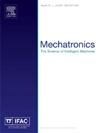带运动规划的三维桥式起重机系统的递归终端滑模控制
IF 3.1
3区 计算机科学
Q2 AUTOMATION & CONTROL SYSTEMS
引用次数: 0
摘要
在实际应用中,三维桥式起重机意外的有效载荷摆动会大大降低运输效率和安全性。为了提高运输效率并解决三维桥式起重机系统固有的有效载荷摆动难题,本研究提出了一种与运动规划相结合的新型递归终端滑模控制策略。具体来说,为了兼顾优化运行效率和减少有效载荷摆动的双重目标,本文引入了一种新的平滑 S 形参考轨迹,并设计了一种递归终端滑动模式控制器来跟踪该轨迹,同时结合摆动角和位移偏差构建了一个递归滑动模式曲面。最后,通过一系列数值模拟和实验验证了所提出的方法。结果凸显了所提控制器的鲁棒性,即使在非零初始条件或外部干扰的情况下,也能快速跟踪参考轨迹。值得注意的是,通过大幅减少有效载荷的摆动角度,所提出的方法提高了运输安全性。本文章由计算机程序翻译,如有差异,请以英文原文为准。
Recursive terminal sliding mode control for the 3D overhead crane systems with motion planning
In practical scenarios, the unexpected payload swinging of a 3D overhead crane can significantly diminish transportation efficiency and safety. To enhance transportation efficiency and address payload oscillation challenges inherent in 3D overhead crane systems, a novel recursive terminal sliding mode control strategy integrated with motion planning is presented in this work. Specifically, to reconcile the dual objectives of optimizing operational efficiency while mitigating payload swing, a novel smooth S-shaped reference trajectory is introduced, and a recursive terminal sliding mode controller is devised to trace this trajectory, incorporating the construction of a recursive sliding mode surface that combines swing angle and displacement deviation. Finally, the proposed method is validated through a series of numerical simulations and experimental trials. The outcomes highlight the robustness of the proposed controller, facilitating swift tracking of reference trajectory even in the presence of nonzero initial conditions or external disturbances. Notably, by significantly reducing payload swing angles, the proposed approach enhances transportation safety.
求助全文
通过发布文献求助,成功后即可免费获取论文全文。
去求助
来源期刊

Mechatronics
工程技术-工程:电子与电气
CiteScore
5.90
自引率
9.10%
发文量
0
审稿时长
109 days
期刊介绍:
Mechatronics is the synergistic combination of precision mechanical engineering, electronic control and systems thinking in the design of products and manufacturing processes. It relates to the design of systems, devices and products aimed at achieving an optimal balance between basic mechanical structure and its overall control. The purpose of this journal is to provide rapid publication of topical papers featuring practical developments in mechatronics. It will cover a wide range of application areas including consumer product design, instrumentation, manufacturing methods, computer integration and process and device control, and will attract a readership from across the industrial and academic research spectrum. Particular importance will be attached to aspects of innovation in mechatronics design philosophy which illustrate the benefits obtainable by an a priori integration of functionality with embedded microprocessor control. A major item will be the design of machines, devices and systems possessing a degree of computer based intelligence. The journal seeks to publish research progress in this field with an emphasis on the applied rather than the theoretical. It will also serve the dual role of bringing greater recognition to this important area of engineering.
 求助内容:
求助内容: 应助结果提醒方式:
应助结果提醒方式:


